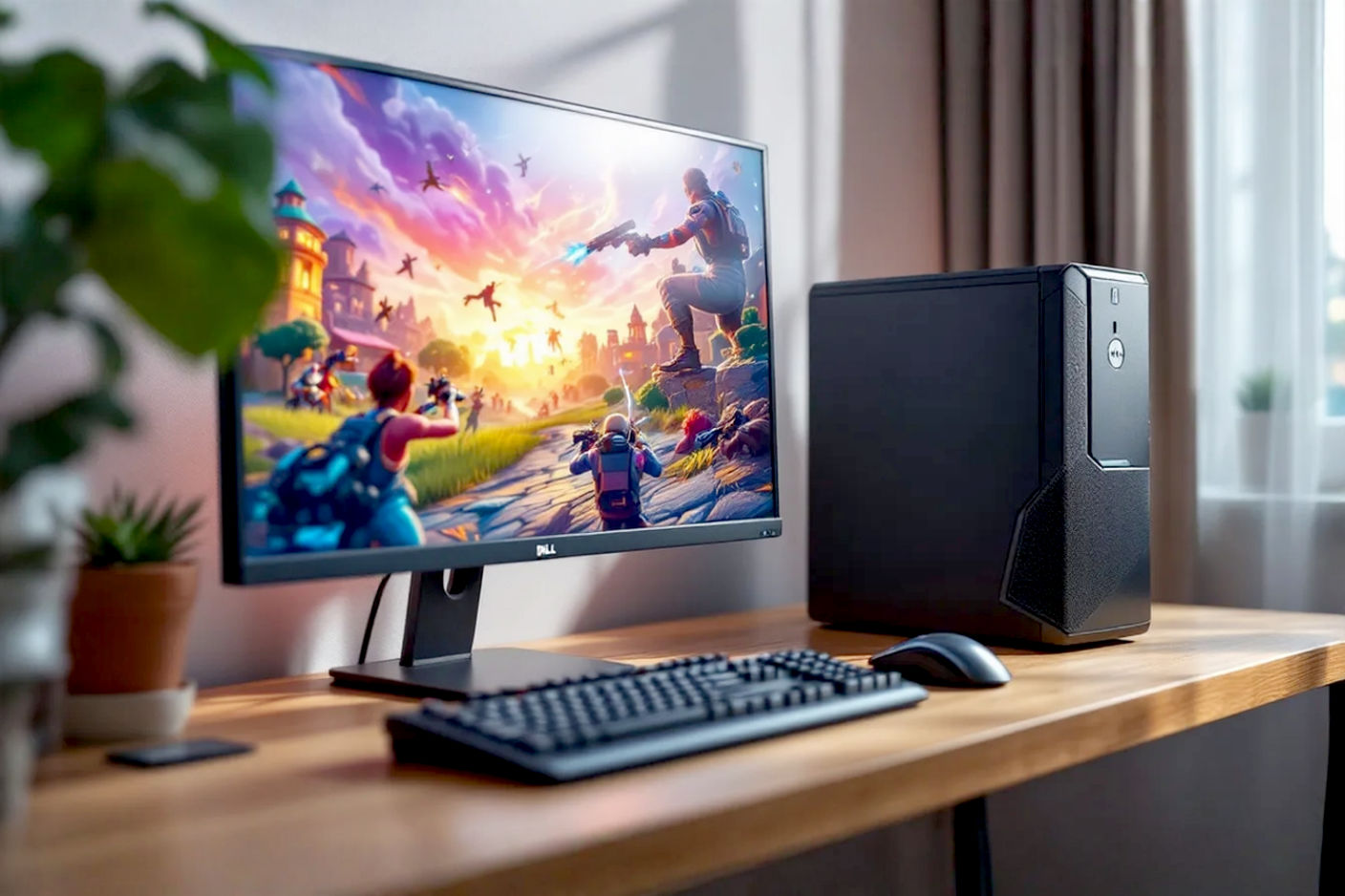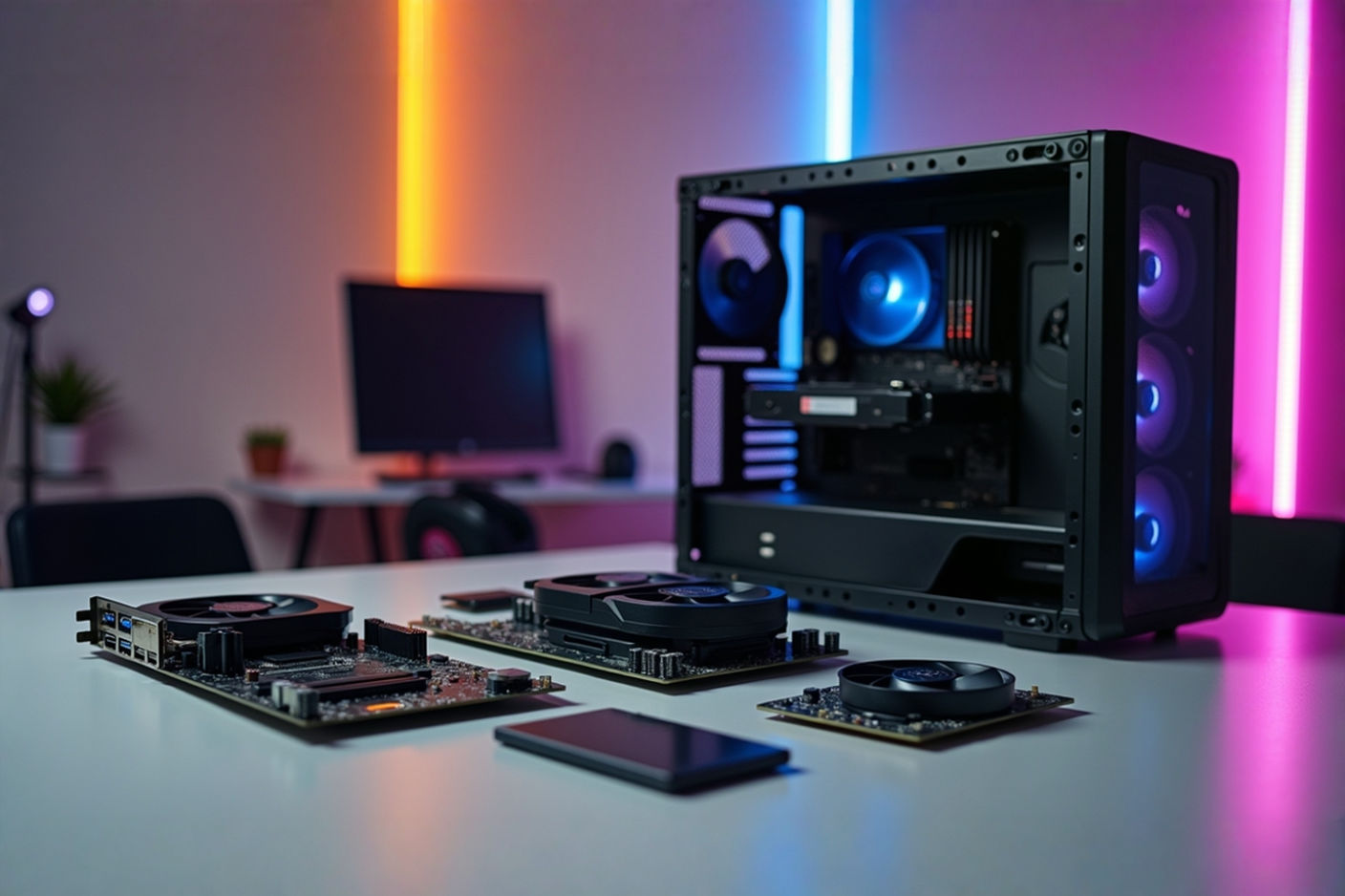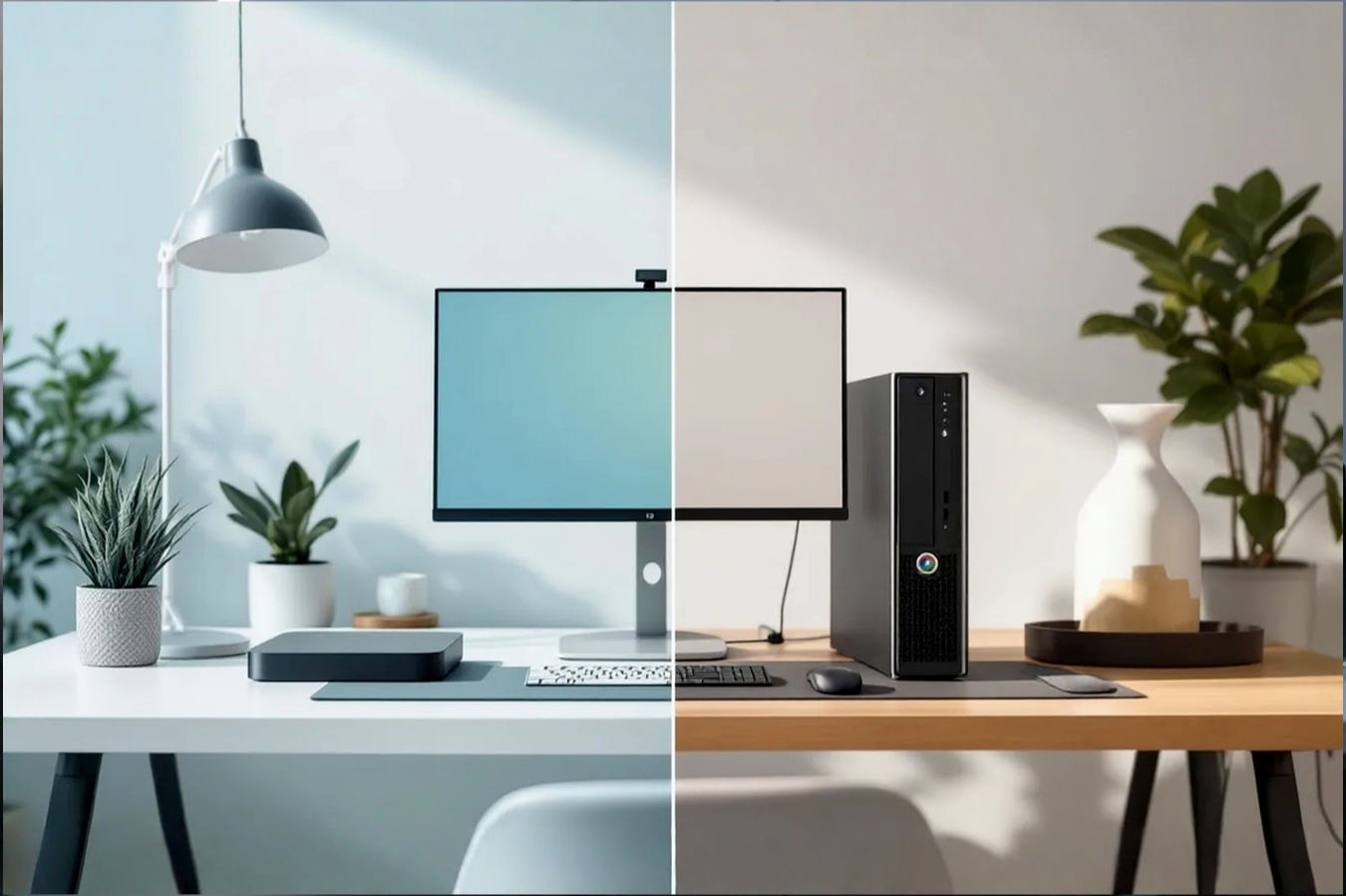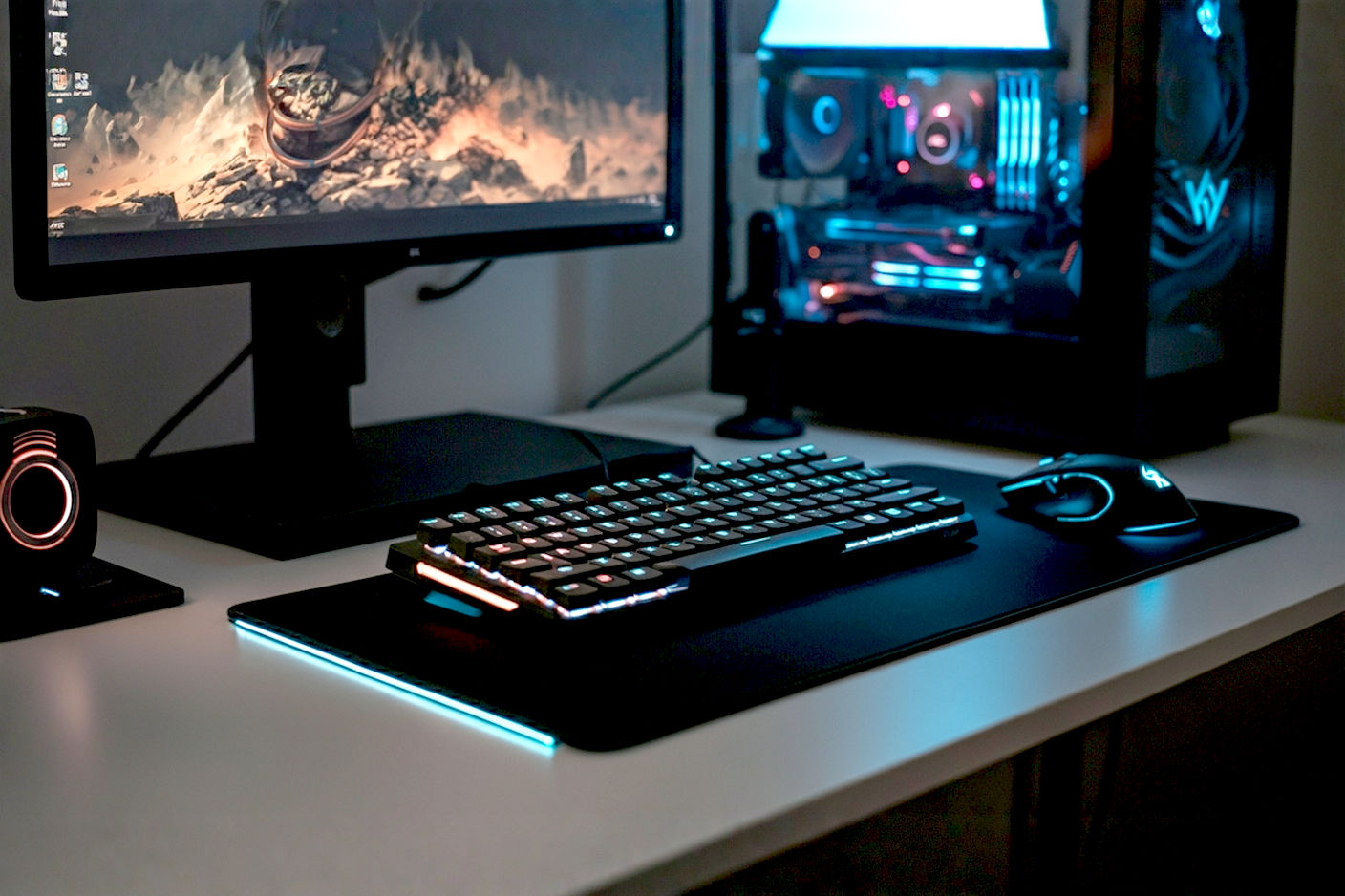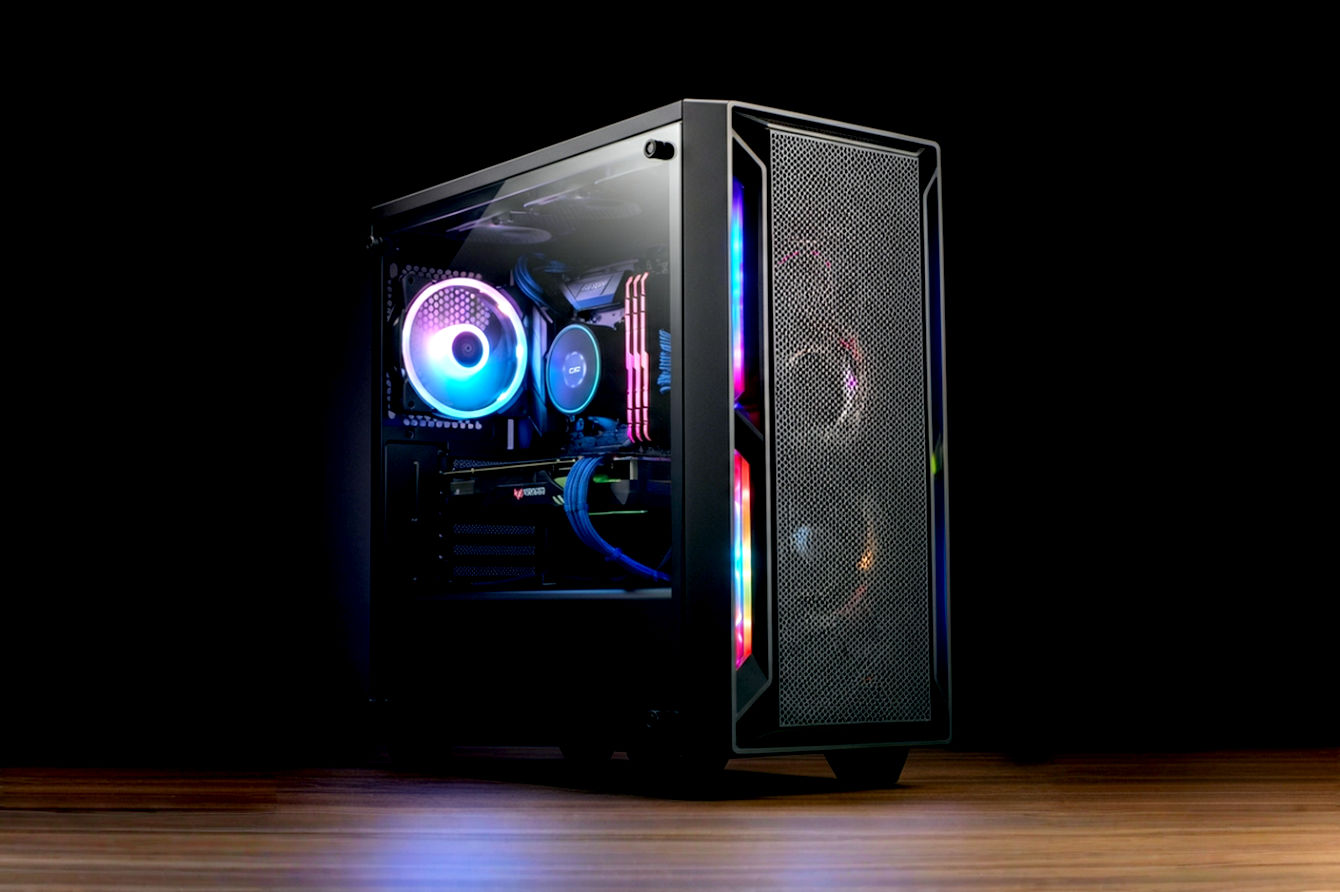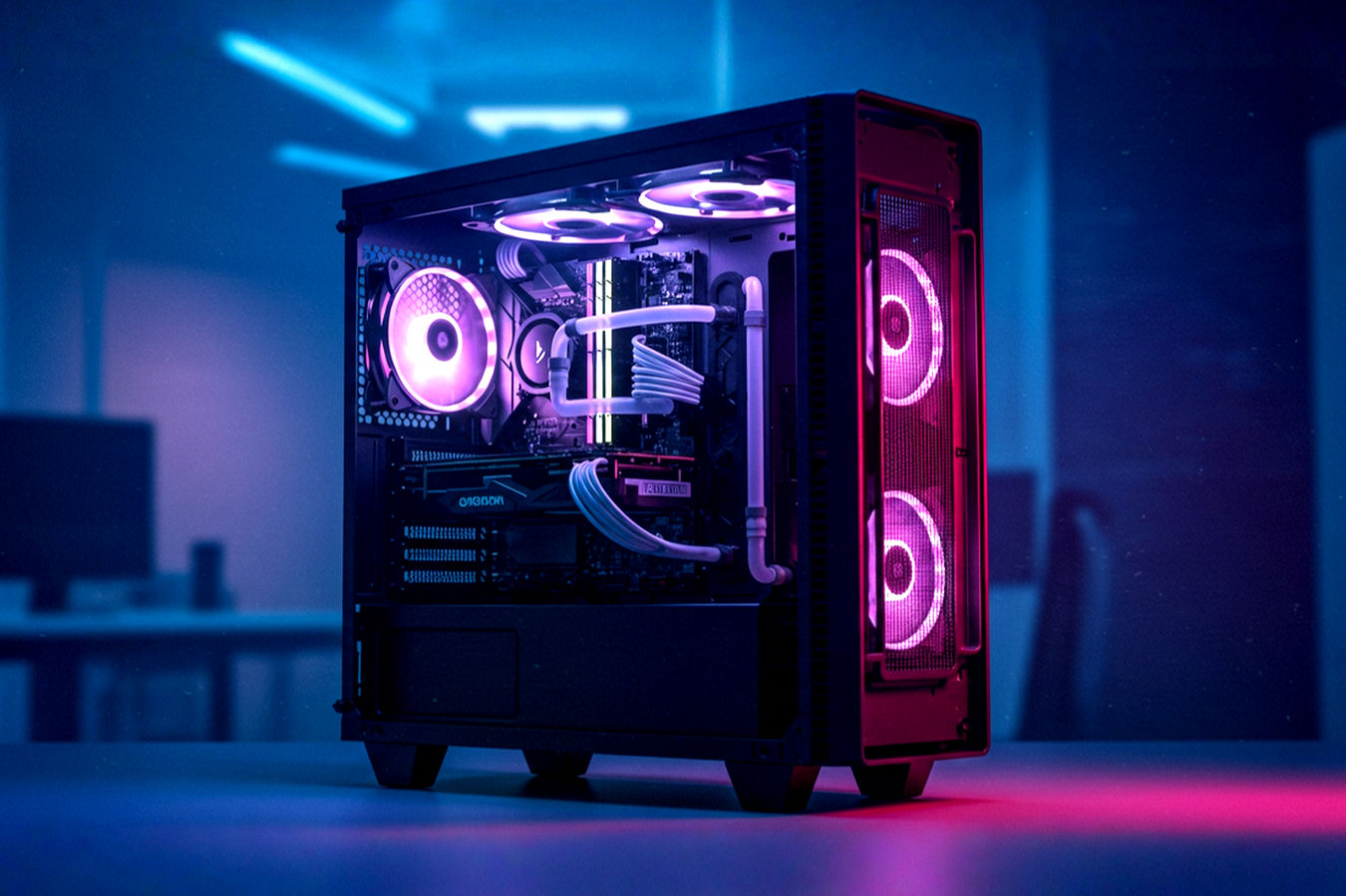This post may contain affiliate links. If you make a purchase through these links, we may earn a commission at no additional cost to you.
Buying a new desktop computer can feel overwhelming, especially when you look at the huge range of prices. Why does one computer cost $500 while another costs $5000? What are you actually paying for? It’s easy to get confused and worry you’re either spending too much or not getting enough for your money. This guide will break down exactly what influences desktop computer prices and help you figure out what you should really pay based on what you need. We’ll cut through the jargon and show you how to find the sweet spot between cost and performance.
Understanding What Makes a Desktop Computer Cost What It Does
The price tag on a desktop computer isn’t just a random number. It’s a reflection of several key factors working together. Think of it like buying a car; the final price depends on the engine size, features, brand reputation, and whether it’s new or used. For computers, the main drivers of cost are the components inside, the brand selling it, and whether you buy it pre-built or build it yourself. Understanding these basics is the first step to making sense of the price.
The Building Blocks: How Components Drive Cost
At the heart of any desktop’s price are its internal parts. These components, often called hardware, are like the organs of the computer. The quality and power of each part significantly impact the overall cost. A computer with a super-fast processor and a top-of-the-line graphics card will naturally cost much more than one with basic parts. We’ll dive deeper into specific components shortly, but know that the sum of these parts is the biggest piece of the pricing puzzle.
Brand Name: Is It Worth the Premium?
Just like with cars or clothing, the brand of a computer can influence its price. Well-known brands often charge a premium. Part of this is for their reputation, customer support, and sometimes unique designs or software. You might pay a bit more for a Dell, HP, or Apple computer compared to a lesser-known brand, even if the internal specs are similar. This doesn’t mean the premium isn’t justified for some users, but it’s a factor to be aware of when comparing prices. You’re sometimes paying for peace of mind or specific ecosystem benefits.
Pre-built vs. Custom-Built: A Major Price Divide
One of the biggest decisions affecting cost is whether you buy a pre-assembled computer or build one yourself from individual parts. Pre-built computers offer convenience; they’re ready to go right out of the box and usually come with a warranty covering the whole system. However, you typically pay extra for this convenience. Building your own computer can often save you money because you’re buying parts closer to their wholesale cost and not paying for the assembly labor or brand markup. It requires more effort and technical comfort, though.
A Closer Look: Key Components and Their Price Impact
To really understand desktop pricing, you need to know about the main components and how much they contribute to the total cost. These are the parts that determine how fast and capable the computer is.
The Brain: Central Processing Unit (CPU)
The CPU, or Central Processing Unit, is often called the brain of the computer. It performs most of the calculations and instructions. CPUs vary greatly in speed, core count (how many tasks they can do at once), and architecture.
CPU Performance and Cost
A basic CPU suitable for web browsing and office tasks might cost under $100. These are typically dual-core or quad-core processors from Intel’s Celeron or Pentium lines, or AMD’s Athlon series. They handle everyday tasks just fine but will struggle with demanding software or multitasking.
Mid-range CPUs, like Intel Core i5 or AMD Ryzen 5, offer a good balance of performance and price, usually costing between $150 and $250. They have more cores and faster clock speeds, making them suitable for more intensive multitasking, moderate gaming, and content creation.
High-end CPUs, such as Intel Core i7/i9 or AMD Ryzen 7/Ryzen 9, are designed for serious gaming, professional creative work, and complex simulations. These can range from $300 to over $500, sometimes even reaching $1000+ for workstation-grade processors. They boast high core counts, hyper-threading (allowing cores to handle multiple tasks simultaneously), and faster speeds. For example, an Intel Core i9-14900K or an AMD Ryzen 9 7950X are top-tier consumer CPUs that command a high price due to their bleeding-edge performance.
The technical explanation involves understanding clock speed (measured in gigahertz, GHz), which is how many cycles per second the CPU can execute, and the number of cores, which are essentially independent processing units within the CPU. More cores and higher clock speeds generally mean better performance but also a higher price due to more complex manufacturing and design. Cache size, another factor, is a small amount of very fast memory on the CPU that helps it access frequently used data quickly, also impacting performance and cost.
The Artist: Graphics Processing Unit (GPU)
The GPU, or Graphics Processing Unit, is specifically designed to handle rendering images, animations, and video. It’s absolutely crucial for gaming, video editing, 3D modeling, and any task that requires significant visual processing power.
GPU Power and Price Tag
For basic desktop use, integrated graphics (GPU built into the CPU) are sufficient and add almost nothing to the cost. These can handle displaying the operating system and running simple applications.
If you plan to do light gaming or some basic photo editing, a budget dedicated GPU might cost $100-$200. Examples include lower-end cards from NVIDIA’s GeForce GTX series or AMD’s Radeon RX series. They have their own dedicated video memory (VRAM) and processing units, offering much better performance than integrated graphics.
Mid-range GPUs, priced between $300 and $600, are the sweet spot for many gamers and creators. Cards like the NVIDIA GeForce RTX 4060 or AMD Radeon RX 7700 XT offer solid performance for playing modern games at good settings or handling more complex creative tasks. They feature more VRAM and processing power.
High-end and enthusiast GPUs are the most expensive component in a gaming or workstation PC, often costing $800 to well over $1500. The NVIDIA GeForce RTX 4080/4090 or AMD Radeon RX 7900 XTX are examples. These cards are beasts, capable of running the latest games at maximum settings on high resolutions or accelerating professional rendering and simulation tasks dramatically. Their high cost is due to complex chip designs, large amounts of high-speed VRAM (like GDDR6X), and advanced features like ray tracing acceleration.
Technically, GPU performance is measured by factors like the number of CUDA cores (NVIDIA) or Stream Processors (AMD), clock speed, memory bandwidth (how fast data can be moved to and from VRAM), and the amount and type of VRAM. A higher count of processing units, faster clocks, and more, faster VRAM all contribute to higher performance and a higher price.
The Workbench: Random Access Memory (RAM)
RAM, or Random Access Memory, is the computer’s short-term memory. It stores data that the CPU is actively using, allowing quick access. The more RAM you have, the more programs and tasks your computer can handle simultaneously without slowing down.
RAM Capacity and Cost
For basic tasks, 8GB of RAM is usually the minimum recommended today, and it’s relatively inexpensive, perhaps $20-$40 for a kit.
16GB is the standard for most users, providing smooth multitasking and good performance for gaming and productivity. A 16GB kit (usually two 8GB sticks) might cost $40-$80 depending on speed and brand.
32GB or more is needed for heavy multitasking, professional video editing, 3D rendering, or running virtual machines. 32GB kits can range from $80 to $150+, with higher speeds and lower latency (how quickly RAM responds to requests) increasing the price.
Technically, RAM is measured in gigabytes (GB) for capacity and megahertz (MHz) for speed (clock frequency). DDR4 and DDR5 are common types, with DDR5 being newer, faster, and typically more expensive. Latency, often expressed as CAS Latency (CL), is also important; lower CL numbers mean faster response times. For example, DDR4-3200 CL16 is a common mid-range specification. More capacity and higher speeds/lower latency cost more due to the manufacturing complexity and quality of the memory chips.
The Filing Cabinet: Storage (SSD and HDD)
Storage is where your operating system, programs, and files are permanently stored. There are two main types: Solid State Drives (SSDs) and Hard Disk Drives (HDDs).
Storage Type, Capacity, and Cost
HDDs are older, mechanical drives that store data on spinning platters. They are much slower than SSDs but offer a lot of storage capacity for a lower price. A 1TB (terabyte) HDD might cost $40-$60. They are suitable for storing large files like videos or backups but aren’t ideal for the operating system or frequently accessed programs due to their slow speed.
SSDs use flash memory, similar to USB drives, with no moving parts. This makes them dramatically faster than HDDs, leading to quicker boot times, faster application loading, and snappier overall system responsiveness.
A 250GB or 500GB SSD, enough for the operating system and a few key programs, might cost $30-$60.
A 1TB SSD, which is a good balance for most users, can range from $60 to $100+, depending on the type (SATA vs. NVMe) and performance.
Higher capacity SSDs (2TB, 4TB, or more) cost proportionally more, often $150 to several hundred dollars.
Technically, SSDs connect via SATA or the faster NVMe interface (which uses the PCIe bus). NVMe drives are significantly faster than SATA SSDs, offering sequential read/write speeds of several thousand megabytes per second (MB/s) compared to SATA’s limit of around 550 MB/s. The type of NAND flash memory used (TLC, QLC, etc.) and the presence of a DRAM cache also affect SSD performance and price. HDDs are measured by their capacity and spindle speed (RPM, revolutions per minute), with 7200 RPM being standard for desktop drives.
The Nervous System: Motherboard
The motherboard is the main circuit board that connects all the components. It has slots for the CPU, RAM, expansion cards (like the GPU), and connectors for storage drives and peripherals.
Motherboard Features and Cost
Basic motherboards, suitable for entry-level builds, might cost $60-$100. They have fewer features, fewer slots for RAM or expansion cards, and simpler power delivery systems.
Mid-range motherboards ($100-$200) offer more features, better build quality, more connectivity options (USB ports, M.2 slots for NVMe SSDs), and often better support for overclocking (making components run faster than their default speed).
High-end motherboards ($200-$400+) are designed for enthusiasts and serious builders. They feature robust power delivery for extreme overclocking, multiple M.2 slots, more SATA ports, advanced networking (2.5Gb or 10Gb Ethernet, Wi-Fi 6E), better audio components, and often flashy aesthetics with RGB lighting.
The technical aspects include the chipset (which dictates compatibility with CPUs and features), the number of RAM slots and maximum supported capacity/speed, the number and type of PCIe slots (for GPUs and other expansion cards), and the quality of the Voltage Regulator Modules (VRMs) which provide power to the CPU. More features, better components, and support for higher performance parts drive up the motherboard’s price.
The Heart: Power Supply Unit (PSU)
The PSU provides electrical power to all the components in the computer. It’s crucial to have a PSU with enough wattage to power everything, especially the CPU and GPU, and one that is reliable.
PSU Wattage, Efficiency, and Cost
PSUs are rated by their maximum wattage output. A basic system might only need a 300-400W PSU, costing $30-$50.
A mid-range gaming PC typically requires a 550-750W PSU, costing $60-$100+.
High-end systems with powerful GPUs and CPUs may need 850W or more, ranging from $120 to $200+.
PSUs also have efficiency ratings (like 80 Plus Bronze, Gold, Platinum, Titanium), indicating how much power they draw from the wall versus how much they supply to the components. Higher efficiency means less wasted energy (as heat) and can save a little on electricity bills over time, but it also increases the initial cost. Modular PSUs, where you only plug in the cables you need, are more expensive but make cable management easier.
Technically, PSU quality is determined by its wattage, efficiency rating (certified by organizations like 80 Plus), the quality of its internal components (capacitors, transformers), and whether it provides stable voltage under load. A higher wattage and efficiency rating, along with better internal components, lead to a higher price.
The Body: Case
The computer case is the enclosure that holds all the components. Cases come in various sizes (form factors) and styles.
Case Size, Features, and Cost
Basic cases are functional and inexpensive, $30-$60. They provide space for components and basic airflow.
Mid-range cases ($60-$100) often offer better build quality, improved airflow, more options for cable management, and potentially features like tempered glass side panels or basic RGB lighting.
High-end cases ($100+) feature premium materials, advanced cooling options (support for large radiators), excellent cable management systems, tool-less installation features, and often sophisticated RGB lighting control.
The technical aspects of a case include its form factor (ATX, Micro-ATX, Mini-ITX, etc., which must match the motherboard), material (steel, aluminum, plastic), cooling potential (fan mounts, radiator support), and ease of building in. More features, better materials, and larger sizes generally increase the cost.
The Cooling System: Keeping Things Chill
Components like the CPU and GPU generate heat, and they need cooling to perform optimally and avoid damage. Cooling systems can be air-based (heatsinks and fans) or liquid-based (AIO coolers or custom loops).
Cooling Performance and Cost
Basic CPU coolers come with most retail CPUs and are sufficient for standard operation, adding almost nothing to the cost.
Aftermarket air coolers, ranging from $20 to $80+, offer better cooling performance and lower noise than stock coolers. Larger heatsinks and more fans mean better cooling but higher cost.
All-in-One (AIO) liquid coolers use a pump, radiator, and fans to cool the CPU. They offer excellent cooling performance and can look very clean. AIOs typically cost $70 to $150+.
Custom liquid cooling loops, which cool multiple components (CPU, GPU) with a network of tubes, radiators, and pumps, offer the best cooling but are the most expensive option, easily costing $200+ just for the parts, plus the complexity of installation.
Technically, cooler performance is measured by its ability to dissipate heat, often specified by a Thermal Design Power (TDP) rating it can handle. Air coolers use heatsinks with fins and heat pipes to transfer heat away from the CPU, where fans blow air through the fins. Liquid coolers use a cold plate on the CPU to absorb heat, which is then transferred to a liquid that circulates to a radiator where fans dissipate the heat. More surface area on heatsinks/radiators, more/faster fans, and efficient pump designs contribute to better cooling and higher cost.
How Your Needs Dictate the Price You Should Pay
The most important factor in determining what you should pay for a desktop is what you plan to do with it. Different tasks require different levels of processing power, graphics capability, and memory.
Basic Use (Web Browsing, Email, Office Apps)
For simple tasks like browsing the internet, checking email, using word processors or spreadsheets, and watching videos, you don’t need a powerful or expensive machine.
What to Expect to Pay
A desktop for basic use can cost between $300 and $500. These systems will likely have a basic CPU (Intel Celeron/Pentium or AMD Athlon), integrated graphics, 8GB of RAM, and a small SSD (250GB or 500GB). They won’t be fast for demanding tasks, but they’ll be perfectly adequate for everyday computing.
Office and Productivity
If you work from home, handle multiple applications simultaneously, or use slightly more demanding business software, you’ll need a bit more power than a basic machine.
What to Expect to Pay
An office/productivity desktop typically falls in the $500 to $800 range. These will likely feature a mid-range CPU (Intel Core i3/i5 or AMD Ryzen 3/Ryzen 5), possibly still integrated graphics or a very basic dedicated GPU, 8GB or 16GB of RAM, and a 500GB or 1TB SSD. This configuration provides a smooth experience for multitasking and running standard office suites.
Creative Work (Photo/Video Editing, Graphic Design)
Creative tasks like editing high-resolution photos, cutting and rendering videos, or working with complex graphic design software are much more demanding on a computer’s resources, especially the CPU, RAM, and storage speed.
What to Expect to Pay
Desktops for creative work start around $800 and can go up to $2000 or more depending on the complexity of the work. You’ll need a powerful CPU (Intel Core i5/i7 or AMD Ryzen 5/Ryzen 7), a capable dedicated GPU (mid-range NVIDIA GeForce RTX or AMD Radeon RX), 16GB or 32GB of RAM, and a fast NVMe SSD (1TB or larger) for project files and scratch disks. More demanding creative professionals working with 4K+ video or complex 3D rendering will need even higher-end components.
Gaming
Gaming is one of the most demanding tasks for a desktop computer, heavily relying on the GPU and CPU, as well as sufficient RAM and fast storage for loading times. The price for a gaming PC varies hugely depending on what games you want to play and at what resolution and frame rate.
What to Expect to Pay
An entry-level gaming PC capable of playing less demanding games or newer titles at lower settings might cost $600 to $900. This would include a mid-range CPU (Intel Core i3/i5 or AMD Ryzen 3/Ryzen 5) and a budget to mid-range dedicated GPU (like an NVIDIA GeForce GTX 1660 Super or RTX 3050, or AMD Radeon RX 6600). It would likely have 16GB of RAM and a 500GB or 1TB SSD.
A mid-range gaming PC, capable of playing most modern games at 1080p or 1440p resolution with good settings, typically costs $900 to $1500. These systems feature a stronger mid-range CPU (Intel Core i5/i7 or AMD Ryzen 5/Ryzen 7) and a mid-range to upper-mid-range GPU (like an NVIDIA GeForce RTX 4060/4070 or AMD Radeon RX 7700 XT/7800 XT). 16GB of RAM and a 1TB NVMe SSD are standard.
A high-end gaming PC, targeting 1440p or 4K resolution with high refresh rates and maximum settings, will cost $1500 to $2500+. This tier includes high-end CPUs (Intel Core i7/i9 or AMD Ryzen 7/Ryzen 9) and powerful GPUs (NVIDIA GeForce RTX 4070 Ti Super/4080 Super or AMD Radeon RX 7900 XT/7900 XTX). 32GB of RAM and a fast 1TB+ NVMe SSD are common.
Enthusiast-level gaming PCs, pushing the absolute limits of performance, can easily exceed $2500, reaching $4000, $5000, or even more. These use the top-tier components available, like an NVIDIA GeForce RTX 4090, often combined with custom liquid cooling and premium cases.
High-Performance Computing (HPC) and Workstations
For highly specialized tasks like scientific simulations, complex data analysis, machine learning, or professional 3D rendering and animation, you need a workstation-class machine. These systems prioritize raw processing power, massive amounts of RAM, and often professional-grade GPUs.
What to Expect to Pay
Workstations start at several thousand dollars ($2000+) and can quickly climb into the tens of thousands for truly high-end configurations. They use powerful multi-core workstation CPUs (like Intel Xeon or AMD Ryzen Threadripper), potentially multiple professional GPUs (like NVIDIA RTX A-series or AMD Radeon Pro), 64GB or more of ECC (Error-Correcting Code) RAM (which is more stable for critical tasks), and multiple fast NVMe SSDs, often configured in RAID arrays for speed or redundancy. These are specialized tools for specific professional fields.
Price Ranges: What Your Budget Gets You
Let’s break down typical price ranges and what kind of desktop computer you can expect to get at each level.
Entry-Level ($300 – $500)
At this budget, you’re looking at a basic machine suitable for web browsing, email, streaming video, and light office work. Don’t expect to run demanding applications or play modern games. Components will be entry-level, likely integrated graphics and limited storage.
Mid-Range ($500 – $1000)
This is where you start getting into machines capable of handling more. A $500-$800 system is good for productivity and potentially light gaming. Moving towards the $800-$1000 mark brings better CPUs and dedicated graphics cards capable of playing many modern games at 1080p resolution with reasonable settings. This range offers a good balance of cost and performance for general users, students, and casual gamers.
High-End ($1000 – $2000)
In this range, you find powerful gaming PCs and capable workstations for creative professionals. You can expect strong CPUs, powerful mid-range to high-end GPUs, 16GB or 32GB of RAM, and fast NVMe SSDs. These machines can handle demanding games at higher resolutions and settings, as well as complex creative tasks efficiently.
Enthusiast and Workstation ($2000+)
This is the territory of top-tier performance. Desktops in this range feature the most powerful consumer components available, or specialized workstation-grade hardware. They are built for maximum gaming performance, professional rendering, scientific computing, and other highly demanding applications. The price scales up significantly with the level of performance required.
Pre-built vs. Building Your Own: Cost and Considerations
As mentioned earlier, how you acquire your desktop significantly impacts the price.
Cost Comparison
Generally, building your own PC is cheaper than buying a comparable pre-built one. You can often save 10% to 30% or even more by sourcing components yourself and assembling them. The markup on pre-built systems covers labor, warranty, support, and brand overhead.
For example, a pre-built gaming PC with an Intel Core i5, an RTX 4060, 16GB RAM, and a 1TB SSD might cost $1000. If you bought those parts individually, the total cost could be closer to $800-$900, depending on sales and specific models.
Pros and Cons
Pre-built:
- Pros: Convenience (ready to use), full system warranty, technical support included, no assembly required.
- Cons: Higher cost for the same specs, less control over specific component brands/models, potential for bloatware (unnecessary pre-installed software), limited customization options at purchase.
Building Your Own:
- Pros: Lower cost for the same specs, complete control over component selection, no bloatware, satisfaction of building it yourself, easier to upgrade individual parts later.
- Cons: Requires technical knowledge and time for assembly, troubleshooting issues can be harder (need to diagnose which part is failing), individual warranties for each component rather than a single system warranty.
For those comfortable with technology, building can offer significant cost savings and customization. For those who prefer simplicity and support, a pre-built system is a good option, even if it costs a bit more.
Beyond the Tower: Hidden Costs and Long-Term Value
The price of the desktop tower itself isn’t always the final cost of getting set up. There are other potential expenses to consider.
Operating System
Most pre-built computers come with Windows pre-installed, and the cost of the Windows license is included in the price. If you build your own PC, you’ll need to purchase a Windows license separately (currently around $100-$130 for Windows 11 Home) or use a free operating system like Linux.
Peripherals
You’ll need a monitor, keyboard, and mouse. While you might already have these, if you don’t, factor in their cost. Basic sets can be inexpensive ($30-$50), but gaming or professional peripherals can cost hundreds of dollars (e.g., high refresh rate monitors, mechanical keyboards, ergonomic mice).
Software
Beyond the operating system, you might need to purchase software like Microsoft Office, antivirus programs, or specialized creative software (like Adobe Creative Suite). These can be one-time purchases or subscription costs.
Upgradability
Consider how easy and affordable it will be to upgrade the computer in the future. A system built on a platform with a newer CPU socket or more RAM slots will offer better long-term value as you can replace individual components to boost performance without buying a whole new machine. Pre-built systems, especially smaller form factors, can sometimes be harder to upgrade due to proprietary parts or limited space.
Warranty and Support
The length and coverage of the warranty are important. Pre-built systems usually offer a system-wide warranty (typically 1-3 years). When building your own, each component has its own warranty, which can vary in length. Consider the value of included technical support if you’re not comfortable troubleshooting issues yourself.
Getting the Best Value for Your Money
Once you know what you need and what different components cost, you can focus on getting the most bang for your buck.
Look for Sales and Deals
Computer components and pre-built systems frequently go on sale, especially around holidays or major shopping events (like Black Friday or Amazon Prime Day). Timing your purchase can save you a significant amount of money.
Consider Refurbished or Used
Buying a refurbished computer directly from a manufacturer or a reputable retailer can be a great way to save money. These systems have been returned, inspected, repaired if necessary, and sold at a discount, often with a limited warranty. Buying used from individuals carries more risk but can offer even deeper discounts.
Avoid Bottlenecks
A common mistake is spending a lot on one high-end component (like a top-tier GPU) but pairing it with a much weaker component (like a very slow CPU or insufficient RAM). This creates a “bottleneck,” where the expensive component can’t perform to its full potential because it’s waiting on the slower part. Ensure your components are reasonably balanced for your intended use. For instance, a powerful gaming GPU needs a capable CPU to feed it frames quickly.
Future-Proofing (Within Reason)
While you can’t truly “future-proof” a computer for a decade, you can make choices that extend its useful life. Opting for a slightly better CPU or motherboard with a newer socket can allow for easier CPU upgrades later. Getting a PSU with a bit more wattage than you currently need provides headroom for a more powerful GPU down the road. Don’t overspend on bleeding-edge components that offer minimal performance gains for a huge price jump unless you absolutely need that last bit of performance. Aim for components that offer the best performance per dollar.
When to Upgrade vs. Buy New
Sometimes, your existing desktop just isn’t cutting it anymore. You face the decision: upgrade parts or buy a whole new machine?
Factors to Consider
- Age of the System: Very old systems (7+ years) might use outdated technology (like DDR3 RAM or older CPU sockets) that makes upgrading individual components difficult or not cost-effective.
- Component Compatibility: Check if newer, more powerful components are compatible with your existing motherboard and power supply. A new, powerful GPU might require a stronger PSU, and a faster CPU might need a different motherboard socket.
- Bottlenecks: Identify the weakest link in your current system. If it’s just the GPU, an upgrade there might give you the boost you need. If multiple components are holding you back (old CPU, too little slow RAM, slow HDD), a full system replacement might be more sensible.
- Cost: Compare the cost of the necessary upgrades to the cost of a new system that meets your needs. Sometimes, upgrading one or two parts is much cheaper. Other times, the cost of upgrading multiple components approaches or exceeds the price of a new, balanced system.
Upgrading key components like the GPU, RAM, or adding an SSD can significantly improve performance for a fraction of the cost of a new PC, provided your existing system isn’t too old or limited.
Conclusion: Finding Your Desktop’s True Value
Navigating desktop computer prices doesn’t have to be confusing. By understanding the core components, how your intended use dictates the necessary hardware, and the difference between pre-built and custom systems, you can make an informed decision. Don’t just look at the total price; look at what’s inside the box and how it aligns with what you need the computer to do. Factor in potential hidden costs like peripherals and software. Whether you’re a student needing a basic machine, a professional requiring a powerful workstation, or a gamer chasing the highest frame rates, there’s a desktop out there at a price that makes sense for you. Do your research, compare specs, and remember that the “right” price isn’t the lowest or the highest, but the one that gets you the performance you need without paying for what you don’t. Empowered with this knowledge, you’re ready to find your perfect desktop at the right price.

